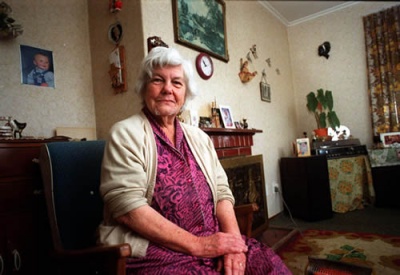Events In History
-
 14 November 1973DPB legislation introduced
14 November 1973DPB legislation introducedThe passage of the Social Security Amendment Act introduced the Domestic Purposes Benefit. Paid out from 1 May 1974, the DPB was to be set at a level that would enable sole parents to stay home to care for their children. Read more...
-
 2 February 1939Welfare plan gets baptism of fire
2 February 1939Welfare plan gets baptism of fireA massive fire destroyed the nearly completed three-storey Social Security building. Just seven weeks later a replacement building was opened by prime minister Michael Joseph Savage Read more...
-
 14 September 1938Social Security Act passed
14 September 1938Social Security Act passedThe cornerstone of the first Labour government's welfare policies, the Social Security Act overhauled the pension system and extended benefits for families, invalids and the unemployed. Read more...
-
 18 September 1937First state house opened in Miramar
18 September 1937First state house opened in MiramarMost of the Labour Cabinet helped the McGregor family move into 12 Fife Lane in Miramar, Wellington. The government's aim was to rid New Zealand of sub-standard housing by building 5000 new homes a year. Read more...
Articles
Children and adolescents, 1930-1960

The need for the New Zealand government to promote national interests during the Depression and the Second World War created a renewed appreciation of the role of the family within society.
-
Page 2 – Children's health
By the late 1940s all New Zealand children had a medical examination on entering school, and were seen by a nurse at standards two and six. These examinations helped
-
Page 3 – Education
By 1940 childhood was internationally recognised as a distinct stage in human development. A child's value to the family was no longer seen as primarily economic. Instead
-
Page 4 – The post-war family
As a consequence of the post-war economic boom there was increasing demand for consumer goods. The 1956 census revealed that more than half of New Zealand homes possessed
-
Page 5 – Further information
Further information for Children and adolescents, 1930-1960.
State housing

New Zealand's first state house was formally opened on 18 September 1937. But the government has provided rental housing for New Zealanders for more than a century. Explore the history of this country's various state housing schemes and their contribution to the New Zealand way of life.
-
Page 3 – The state steps in and out
The National government introduced full market rents in 1991 to reduce the state role in housing provision. From the start, public debate over state housing policy in New
-
Page 4 – Designing communities
Community has many different meanings. People might live in a particular community, but have little contact with their neighbours, preferring instead to pursue their social
Related keywords
- michael joseph savage
- wellington city
- thorndon
- state housing
- miramar
- labour party
- protest
- child welfare
- housing
- children
- adolescents
- dunedin
- communities
- palmerston north
- maori housing
- town planning
- health
- 1970s
- flats
- national party
- market rents
- liberal party
- john a lee
- crime
- mazengarb report
- families
- education
- helen clark
- historic places
- MPs
-
Main image: Inside a state house
One beneficiary of the first Labour government's housing policy was the Fleury family of Dunedin. After living in a cramped, two-bedroom cottage on The Flat, Nell Fleury thought she had entered 'heaven' when she moved uphill to her four-bedroom state house in Corstorphine



